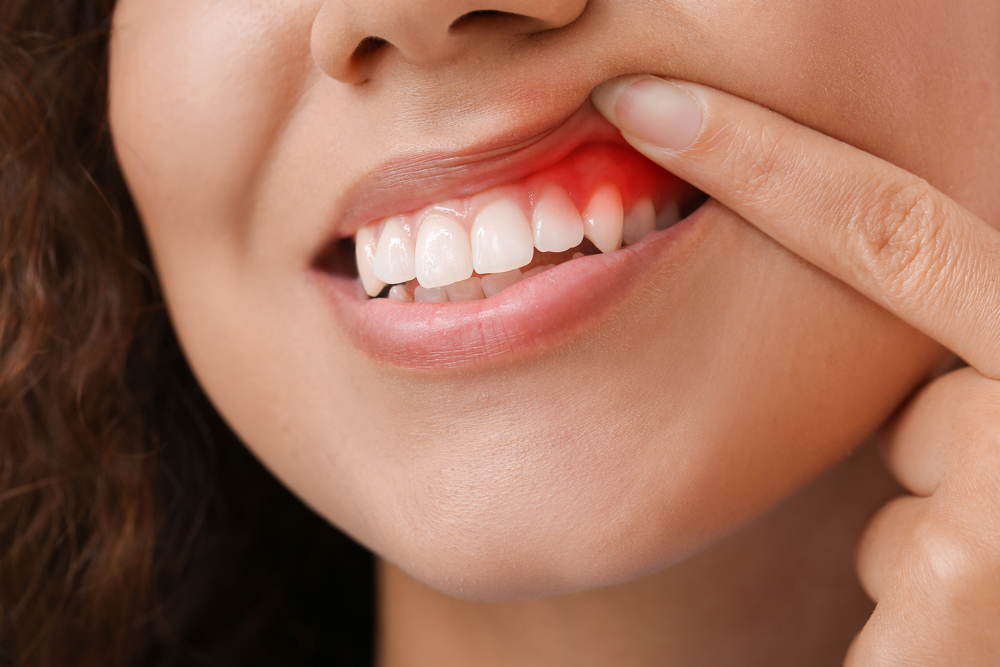Get the Smile You Deserve With Pocket Reduction Surgery: A Gum Disease Treatment
If you’re struggling with severe gum disease, a cutting-edge treatment called pocket reduction surgery may help. This procedure removes harmful bacteria and damaged tissue from the pockets around your teeth, reducing their depth and preventing further harm, including bone loss over time.
Our Franklinville, NJ dentist breaks down how this surgery works and at what stage of gum disease they may recommend pocket reduction surgery. If you have any questions, call our office at (856) 694-5555.
Our Franklinville, NJ dentist wants to ensure that your oral health is in excellent condition. To schedule an appointment, contact Franklinville Family & Cosmetic Dentistry today by calling (856) 694-5555.

What Is Pocket Reduction Surgery?
Pocket reduction surgery, also called flap surgery or osseous surgery, is a dental procedure that aims to treat advanced periodontal disease by removing bacteria that have accumulated in the pockets around the teeth. These pockets form when the plaque and tartar are trapped under the gums or the gums are pulled away from the teeth. Over time, bacteria within the pockets can damage the surrounding bone and eventually lead to tooth loss if left untreated.
In some cases, a bone graft may be necessary to replace lost bone and stabilize the teeth.
During flap surgery, a skilled periodontist will make incisions in the gum tissue to create a flap. Your periodontist will then clean the area of bacteria and tartar buildup before suturing the flap back into place.
How Pocket Reduction Works for Periodontal Disease
The first step in pocket reduction surgery is thoroughly examining and cleaning teeth and gums. Your periodontist will use a periodontal probe to measure the depth of the pockets around your teeth. Your periodontist will use dental X-rays and other diagnostic tools to assess the extent of the damage caused by periodontal disease. If the damage is significant, pocket reduction surgery may be recommended.
Before the procedure, your dental professional will administer a local anesthetic to your mouth to numb the area around the teeth and gums. This makes sure you’re comfortable during the surgery. Once the anesthetic has taken effect, they’ll make incisions in the gum tissue to create a flap. This flap will be lifted to expose the roots of the teeth and the surrounding bone.
They’ll use special instruments to remove the remaining bacteria and tartar buildup from the area and periodontal pockets. The roots of the teeth will also be cleaned to remove any bacterial buildup that may have accumulated. Once the site has been thoroughly cleaned, your periodontist will suture the flap back into place.
Benefits of Pocket Reduction Surgery for Gum Tissue
There are many benefits to pocket reduction surgery, including:
- Reduces Pocket Depth: By reducing the pocket depths between the teeth and gums, osseous surgery helps remove the source of the infection.
- Prevents Further Damage: Periodontal disease can cause damage to the teeth and supporting structures. Pocket reduction surgery can help prevent further damage and preserve the teeth.
- Improves Oral Health: By removing the source of the infection, pocket reduction surgery can improve oral health.
- Enhances Appearance: Pocket reduction surgery can improve the appearance of the gums and teeth by reducing swelling and inflammation.
- Promotes Healthy Gums: By removing the source of infection, pocket reduction surgery helps maintain healthy gums.
Associated Costs
The cost of this surgery can vary depending on several factors, including the geographical location, the dentist or periodontist performing the procedure, the complexity of the case, and the extent of treatment needed.
In general, osseous surgery can range from a few hundred dollars to several thousand dollars per quadrant (one-fourth of the mouth). This cost usually includes the fees for the surgical procedure itself, local anesthesia, sedation (if necessary), post-operative care, and follow-up visits.
Please remember that this is a rough estimate, and the amount can vary significantly. Additionally, dental insurance coverage may affect the out-of-pocket expenses for the procedure. It’s advisable to consult with a dentist or periodontist who can provide a more accurate cost estimate based on your specific situation and location.
Frequently Asked Questions
A local anesthetic is used during pocket reduction surgery to numb the area, helping minimize discomfort. Patients may feel some pressure or vibration during the procedure, but shouldn’t experience any pain. After the procedure, some patients may experience mild discomfort, but this can usually be managed with over-the-counter pain medication.
The recovery time for osseous surgery varies from patient to patient, depending on the severity of the periodontal disease and the extent of the surgery. Most patients can return to normal activities within a few days of the procedure, but it may take up to a week or two to fully recover.
During recovery, avoid hard or crunchy foods and follow your dentist’s post-operative instructions carefully. This may include using a special mouthwash or following a specific oral hygiene routine.
Maintaining good oral hygiene habits is key to preventing periodontal disease from recurring after pocket reduction surgery. Poor oral hygiene is a significant risk factor for developing gum disease, so it’s important to maintain a thorough oral care routine. This includes brushing twice a day, flossing at least once per day, and using mouthwash regularly. Your dentist may also recommend additional treatments, such as antibiotics or antimicrobial mouthwash, to help control bacteria and prevent reinfection. Regular dental checkups and cleanings are also important for monitoring the health of your gums and preventing future gum disease.
Many dental insurance plans cover pocket reduction surgery for gum disease if it’s deemed medically necessary. However, check with your insurance provider to understand your coverage and any out-of-pocket expenses.
Your dentist’s office can work with your insurance provider to determine your coverage and help you navigate the insurance process. If your insurance doesn’t cover the procedure or you don’t have insurance, your dentist may offer payment plans or financing options to help make the procedure more affordable.

Revitalize Your Smile and Ease the Symptoms of Gum Disease
If you’re tired of living with the discomfort and embarrassment of pocketing around your teeth, it’s time to take action and treat gum disease. Pocket reduction surgery can help you regain your confidence and improve your oral health.
Take the first step towards a brighter, healthier smile by calling our Franklinville, NJ dental office today at (856) 694-5555. Our team of experienced professionals will guide you through the process and answer any questions you may have.